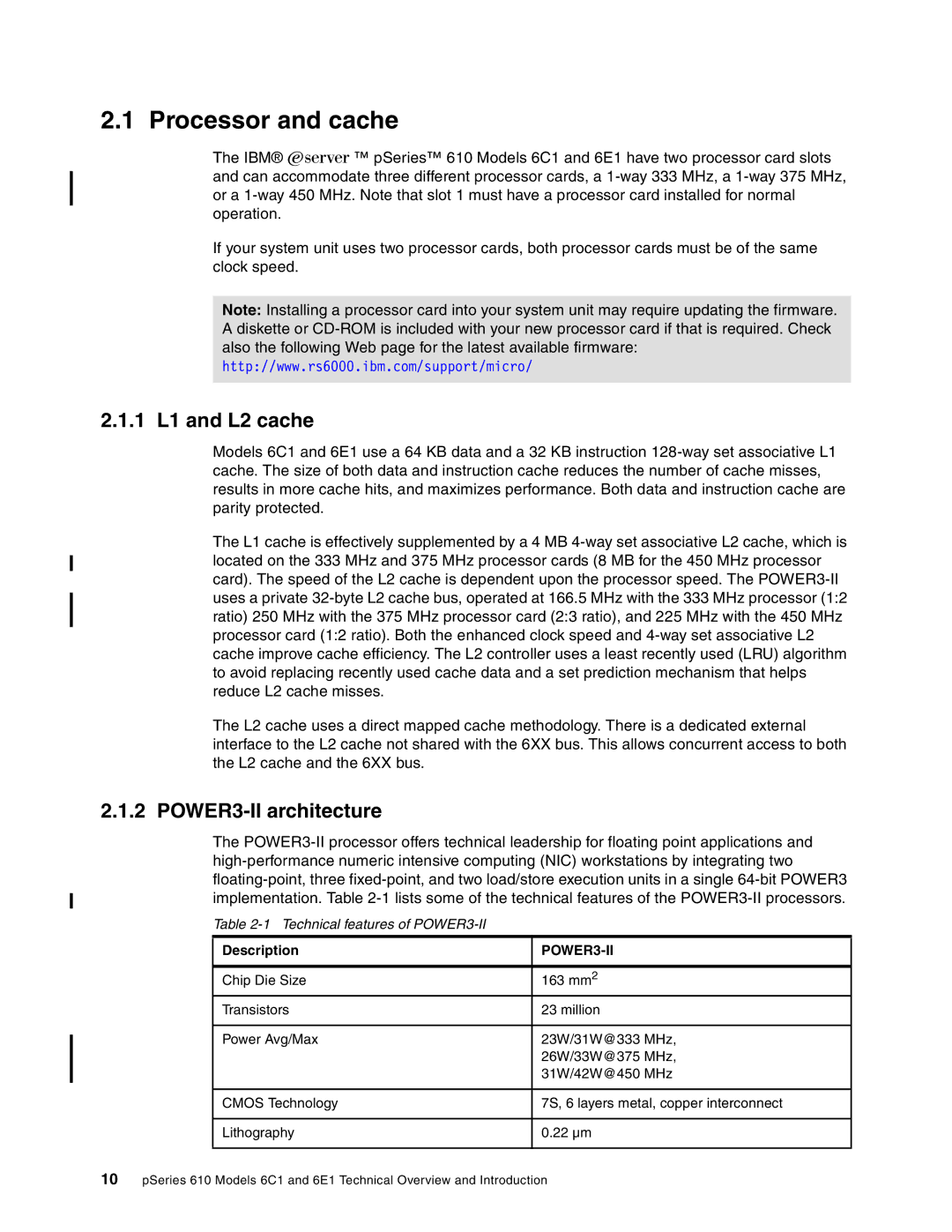2.1 Processor and cache
The IBM® ^™ pSeries™ 610 Models 6C1 and 6E1 have two processor card slots and can accommodate three different processor cards, a 1-way 333 MHz, a 1-way 375 MHz, or a 1-way 450 MHz. Note that slot 1 must have a processor card installed for normal operation.
If your system unit uses two processor cards, both processor cards must be of the same clock speed.
Note: Installing a processor card into your system unit may require updating the firmware. A diskette or CD-ROM is included with your new processor card if that is required. Check also the following Web page for the latest available firmware:
http://www.rs6000.ibm.com/support/micro/
2.1.1 L1 and L2 cache
Models 6C1 and 6E1 use a 64 KB data and a 32 KB instruction 128-way set associative L1 cache. The size of both data and instruction cache reduces the number of cache misses, results in more cache hits, and maximizes performance. Both data and instruction cache are parity protected.
The L1 cache is effectively supplemented by a 4 MB 4-way set associative L2 cache, which is located on the 333 MHz and 375 MHz processor cards (8 MB for the 450 MHz processor card). The speed of the L2 cache is dependent upon the processor speed. The POWER3-II uses a private 32-byte L2 cache bus, operated at 166.5 MHz with the 333 MHz processor (1:2 ratio) 250 MHz with the 375 MHz processor card (2:3 ratio), and 225 MHz with the 450 MHz processor card (1:2 ratio). Both the enhanced clock speed and 4-way set associative L2 cache improve cache efficiency. The L2 controller uses a least recently used (LRU) algorithm to avoid replacing recently used cache data and a set prediction mechanism that helps reduce L2 cache misses.
The L2 cache uses a direct mapped cache methodology. There is a dedicated external interface to the L2 cache not shared with the 6XX bus. This allows concurrent access to both the L2 cache and the 6XX bus.
2.1.2 POWER3-II architecture
The POWER3-II processor offers technical leadership for floating point applications and high-performance numeric intensive computing (NIC) workstations by integrating two floating-point, three fixed-point, and two load/store execution units in a single 64-bit POWER3 implementation. Table 2-1lists some of the technical features of the POWER3-II processors.
Table 2-1 Technical features of POWER3-II
Description | POWER3-II |
| |
Chip Die Size | 163 mm2 |
Transistors | 23 million |
| |
Power Avg/Max | 23W/31W@333 MHz, |
| 26W/33W@375 MHz, |
| 31W/42W@450 MHz |
| |
CMOS Technology | 7S, 6 layers metal, copper interconnect |
| |
Lithography | 0.22 µm |
| |

